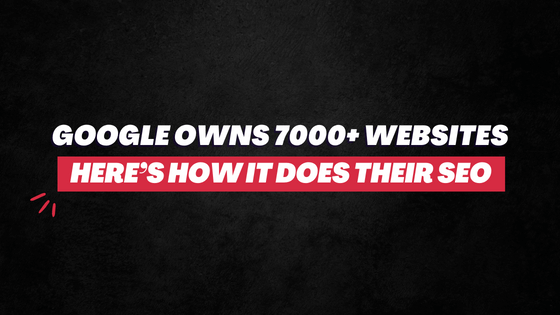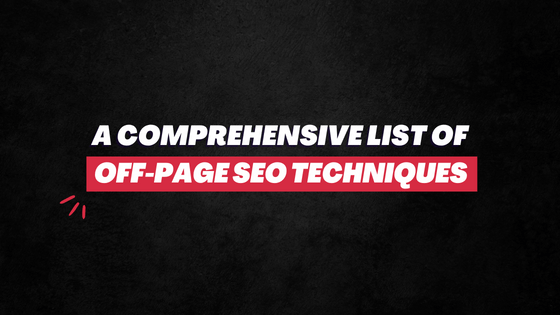Is high bounce rate good?
Abso-frickin-lutely NOT! It hurts your search ranking, organic traffic, and conversion.
So, quick, do this: check your bounce rate on Google Analytics.
Do it now!
Here’s mine from last week…

Did you check yours?
If it’s more than 70 percent, it’s definitely in red and requires immediate attention.
And even if not, knowing how to decrease your bounce rate can take you a long way in the SEO game.
Go here to read the basics: What is Bounce Rate (and EVERYTHING Else You Need To Know About It)
Let’s jump in.
1. Provide Visitors with What They Are Looking For

Relevancy. Relevancy. Relevancy.
You can’t expect people to lurk around on your website if you aren’t providing them real value.
And you bring “value” only when you recognize their pain point and deliver them the right solution.
So, when you’re creating content, don’t just be a writer or content creator… be a friend who’s having a one-on-one conversation with the visitor.
You understand their problems and you genuinely want to help them through the most relevant and appropriate solution.
Remember, you must understand their intent when producing content. Meaning…
“How to cure flu” – if that’s their problem…
“Go to the doctor” is certainly a solution and that’s what they should do.
However, that’s not necessarily the solution they are looking for, is it?
If they wanted to, they would have gone to the doctor anyway without the *genius* advice of “go to the doctor”.
They are looking for DIY, at-home treatment. That’s their intent. And that’s what you must recognize when you’re creating content.
Recommended Read: SEO Writing: A Complete Guide to Create Content That Google Rewards
Key Takeaway:
- Create content around “what the readers want” and NOT around what you want readers to want.
- Understand the intent of the audience. And then personalize the solution for their unique problems.
2. Say Bye To Clickbait Titles And Descriptions
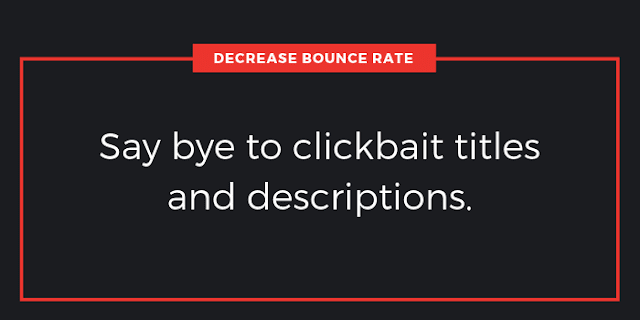
It’s clichéd advice, sure! But it’s surprising how many copywriters and bloggers still do it anyway.
Here, on Spell Out Marketing, I have published only one article with the clickbait title: Backlinks are dead.
While the article does have enough context and resources (and enjoys decent traffic from social media), I have learned two things:
- It hurts the brand
- It doesn’t work—not at least with the serious audience that I target
If you’re trying to provide visitors with what they are looking for, as mentioned in the previous point #1, it automatically eliminates the need to write clickbait titles and descriptions.
Because you then rely on truth and not on clickable lies.
In our context of how to reduce bounce rate, when you publish misleading titles and descriptions, it will…
- Attract the audience that you might not necessarily be targeting. (So, they will leave because they wouldn’t get the real value.)
- Disappoint the visitors because they didn’t get what they were looking for. (So, why will they stick around? They will leave, of course.)
Recommended Read:
Key Takeaways:
- Titles and descriptions don’t have to be a lie or misleading to peak attention and interest.
- Don’t aim to attract “more” audience. Attract “relevant” audience.
3. Improve Your Website Loading Speed
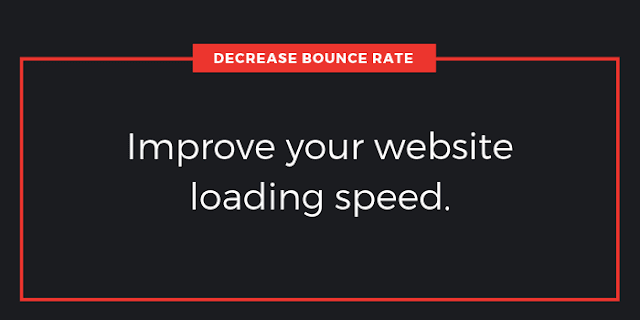
We know already just how important website speed is to SEO.
A second delay in the page load time results in an 11 percent loss in page views.
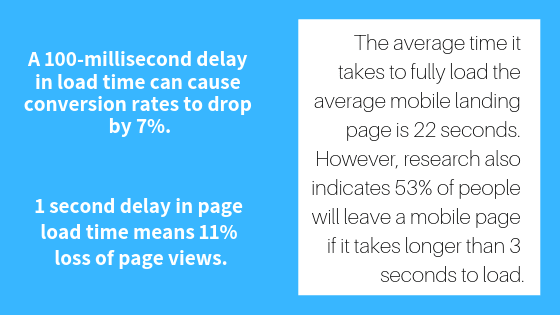
When it comes to bounce rate, it’s not hard to guess how loading speed affects this metric.
When your website is slow, it delivers a bad user experience.
So, no matter how great your content is, there’s a good chance that the person will stop engaging with your site as soon as they get their solution.
Also, industry competition, too, comes to play a big role here.
When you have too many competitors, the visitors have many alternatives.
So, when your website is loading very slowly, the visitors wouldn’t think twice about hitting that ‘Back’ button and heading to your competitors’ sites.
Now… What’s the speed of your website at this moment?
Check it on GTmetrix.
Aim to have a loading speed of less than 3 seconds.

If it’s more than 3 seconds, take it seriously and work around to improve its speed. The faster, the better.
If you use WordPress, here’s a nice video by Oxygen on how you can optimize and increase the speed of your website:
Recommended Read: Does Your Website Load in 2 Seconds?
Key Takeaway:
- Your website speed is directly correlated to User Experience (UX).
- The faster the loading speed, the better it is for SEO and UXO.
4. Is Your Content Easily Readable?
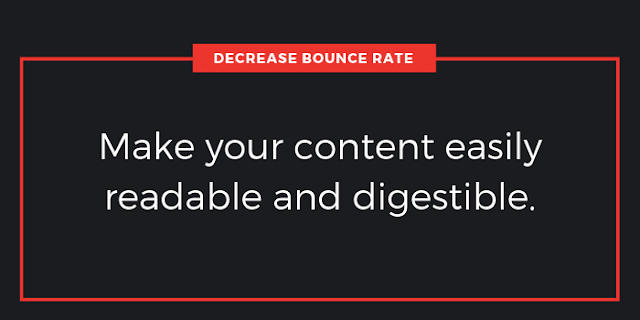
This is one of the most underrated factors I have seen in the SEO and content marketing sphere. That’s exactly why I wrote Your Font is Hurting Your Website Ranking.
If your fonts aren’t readable – or visually appealing enough to read – nobody would spend time reading it.
Imagine these texts you’re reading at this moment…
Imagine if they were smaller that you have to squint OR bigger that requires quick eye movement – that wouldn’t be such a good experience, would it?
Your font (style, family, size) must be highly optimized.
In the same breath, you must also pay attention to the format of your content.
If you go through this article or any other on my blog, you will notice a user-friendly format where there’s…
- Enough whitespace between lines
- Paragraphs are no more than 2-3 lines
- A lot of bullet points
- Proper headings and sub-headings
All these, and more, collectively, make the contents easier, interesting, and more appealing to read VS. large blocks of texts that often feel overwhelming.
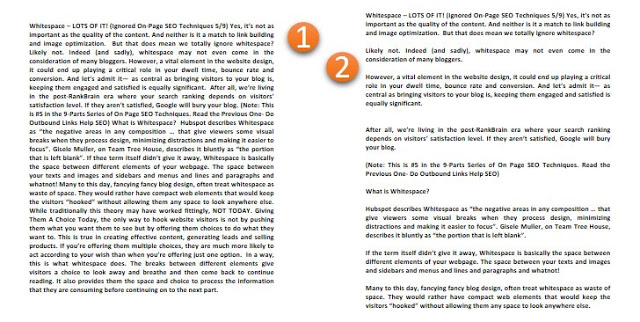
Key Takeaways:
- Incorporate enough whitespace and visual appeal to make the read interesting.
- Optimize content format for better UX. Shorter paragraphs, small lines, more bullet points, more.

What will a visitor do if she/he is met with a dead-end on the website? Of course, leave!
If they find your content valuable and want to explore your website BUT don’t see how, they will leave.
This is where having your navigation bar visible and easy to access is very important.
Have a navigation menu bar at the top of the page. And have one at the very bottom.
Making it stick somewhere on the screen (like you see on this blog both on desktop and mobile) would make it all the more visible.
This will help visitors to jump from one page to another rather conveniently and quickly.
Now, in navigation, provide enough relevant options.
Have ‘About’ and ‘Contact’. If you offer a product/service, keep it there on the menu as well.
Remember, once on a company’s homepage…
- 86 percent of visitors want to see information about the company’s products/services.
- 64 percent of visitors want to see the company’s contact information.
- 52 percent of visitors want to see “about us” information.
In fact, when reaching a company’s website via a referral site, 50 percent of visitors will use the navigation menu to orient themselves. (Source)
In addition, also make sure your logo (or brand name) at the top is clickable and navigates to the homepage.
Key Takeaways:
- Have a navigation menu bar at the top and bottom of the page.
- Include ‘About’ and ‘Contact’ in the navigation compulsorily.
6. Ace Your Internal Link Building Game
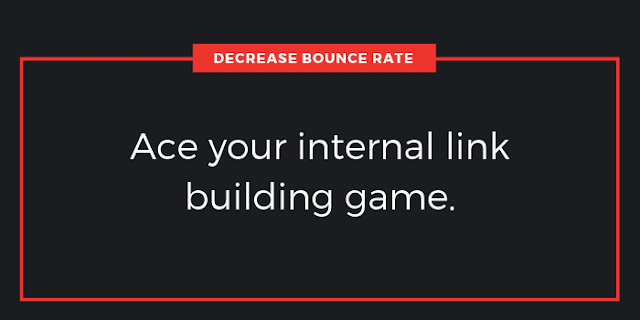
If you notice, in this post, I am linking to many of my other posts on Spell Out Marketing (this blog).
I am doing this through either relevant anchor texts or simply through “Recommended Read”.
It has two fold-benefit.
One, it spread the link juice to different pages and across the blog. This is a great SEO practice. Remember, keep the link DoFollow.
(Read: Everything You Want to Know About DoFollow and NoFollow Links)
Two, I am providing readers enough options and plenty more resources to continue browsing Spell Our Marketing and keep on consuming the content.
This provides them with more value and keeps them engaged, eventually offering them the right user experience.
All these end up helping you reduce the bounce rate of your website.
So, if you don’t already link other internal pages in your content, start today.
The foremost, and perhaps the only rule of good internal link building strategy – at least for the UX purpose – is relevancy.
Link content that is relevant to the current page that the visitors are on.
For example, if I link 37 winning productivity tips for part-time bloggers, you’re less likely to click on it vs. if I link What is bounce rate, how it is calculated, why it is important and what’s the ideal rate.
The latter one is more related to this particular post on “how to reduce bounce rate” than the former one.
Get it?
When you have more content on your blog, internal linking becomes quite easy and seamless.
Key Takeaways:
- In your content, link to other internal pages on your domain.
- Make sure your internal links are relevant to the current content.
7. Include a Strong Call To Action (CTA)
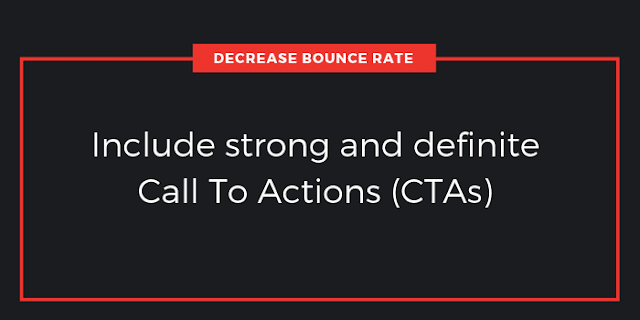
Often, visitors wouldn’t know what they should do next.
Other times, once they have got the solution from this landing page, they would not want to stick around for longer.
In both cases, they would leave the website.
This is where providing them with a definite call to action is essential.
So, at the end of each of your content (and even in the middle or any other position), provide visitors with a clear, well-defined call to action button.

(Image Screenshot: Protocol 80)
Tell them what they need to do – and what they will get in return for taking that action.
Talking about CTA, make it in a button form (not image or text)… and make it very personalized.
Like this of Unbounce…

Personalized Calls To Action perform 202 percent better than basic CTAs.
So, instead of going with “Click Here” or “Sign Up”, choose something like “I want the free eBook” “I want to build muscle”.
Key Takeaways:
- Have a (very) clear CTA button.
- Make your Call To Action very personalized.
8. Make The Website (More) Mobile-Friendly

Yes, it’s a cliché that you likely hear everywhere. But it’s incredibly essential – more so today than ever…
…when up to 70 percent of web traffic happens on a mobile device.
And consumers now spend more than 5 hours a day on their smartphones.
Your website must be optimized effectively for mobile users. This is important for search ranking and conversion. And very, very important for a good user experience.
Having a responsive design is, of course, the first step.
Following, you must optimize your navigation and fonts to better suit the smaller screens.
Make sure there’s enough space between the clickable objects and that they are of the right size.
Format content correctly that makes them aesthetically appealing and engaging to consume on small devices.
The images must respond properly to the screen size and adjust in size the right way. The scrolling should be smooth.
Collectively, there’s a lot you can do to optimize your website for mobile.
Think from a visitor’s perspective. What kind of website would deliver you the best user experience on mobile devices?
Then go ahead and have a similar UX-optimized website.
Key Takeaways:
- Make sure the website design is responsive.
- Focus on font legibility, navigation, content formatting, image responsiveness, and scrolling smoothness.
9. Minimize Technical Errors
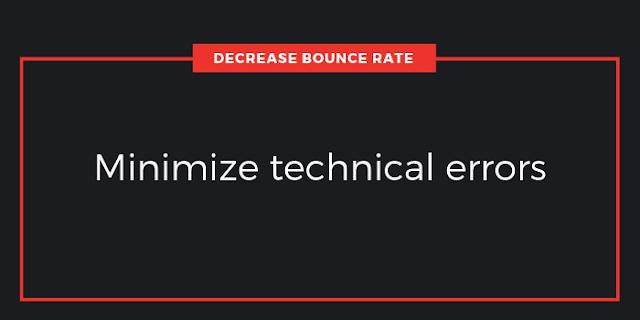
Imagine you land on a webpage only to be welcomed by a 301 or 302 status code. There’s a good chance you would leave, would you not?
There could be plenty of such technical errors on your website that can repel the visitors…
Like, contact form not working, the navigation bar overlapping the block of texts, the popup not moving/canceling off the screen, a sticky component in the sidebar making scrolling impossible, and some scripts not loading correctly.
All these technical errors lead to poor UX. And when the person is not enjoying her or his experience on the website, they will leave.
And it will even hurt your brand.
They might never re-visit your website out of the previous poor experience.
So, keep an eye on such technical errors, whose number increases if you have a larger and fancier website.
Fix them immediately as soon as you spot them.
Key Takeaways:
- Audit your website regularly to find technical errors.
- Look out for broken links in particular.
10. Audit The Quality Of Your Content
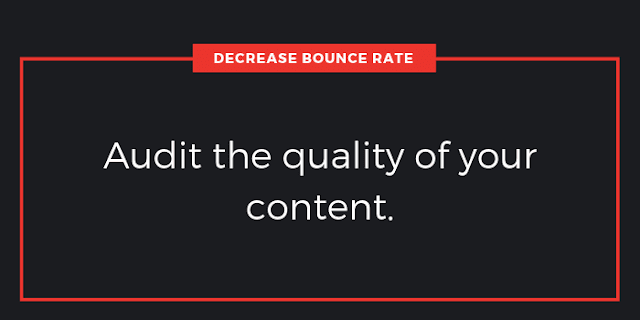
YOU think you publish high-quality content.
But what if, in reality, the content isn’t as great as you believe? What if it’s really poor and invaluable?
I know for a fact that some of the earliest blog posts I published here on Spell Our Marketing were bad in terms of quality. And I had to revamp and repurpose them eventually.
When visitors are consuming your content that isn’t the very best, they are going to make perceptions accordingly.
Foremost, they wouldn’t want to engage with the content.
Second, they wouldn’t want to visit back your website again.
Third, even if you’re dropping big value in other blog posts, this one single piece of poor-quality content would hurt you in the game. Remember, one bad fish can spoil the whole pond.
So, audit the contents on your website.
Prioritize important pages like ‘About’ and ‘Contact’ the most.
Next, move on to content that gets the most traffic/attention. Review them and make fixes.
Also, head to your Analytics and find out webpages that have the highest bounce rate and exit rate.
Go through the content on these pages and make appropriate changes if needed.
Remember, there’s no alternative to good quality content. It might not pay off immediately but it will eventually contribute if you’re building a content asset on your website.
Recommended Read: How to Create Content Fast (Without Hurting Its Quality)?
Key Takeaways:
- Prioritize the content on important pages foremost. Like ‘About’, ‘Contact’, and ‘Services’.
- Use analytics to find webpages with the highest bounce and exit rate. Focus on these pages.
11. Optimize Your Above The Fold Content

The moment someone enters your landing page, the very first thing they see can make or break the deal for you.
Remember, it takes a visitor only 50 milliseconds to form an opinion about your website.
So, if you have the right above-the-fold content, they are going to form a good opinion, which will play in your favor in bounce rate and other SEO metrics.
But if the ATF is bad, they would form a not-so-good opinion about your website, which significantly increases the likelihood of them leaving the page.
I have covered this topic in depth in a different post…
Check out 16 Best Practices of Above The Fold Content Optimization
Key Takeaways:
- Optimize your above-the-fold content to deliver visitors a good experience.
- Have opt-in forms or CTA on the homepage’s first fold. On the contrary, avoid any such form or CTA on other landing pages.
12. De-Activate The Popups
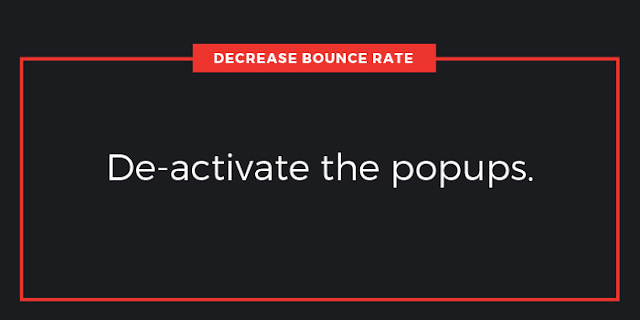
Yes, pop-ups, scroll boxes, and even welcome mats convert better.
But this isn’t universal to every niche and everyone’s website. (Conversion depends on many diverse factors.)
So, when you’re installing these opt-ins on your website, you must also be aware of the risks that they come with.
Such pop-ups and sliders are usually quite intrusive, which comes in a way of good user experience.
And not to forget, they also slow down the website.
In addition, (unless your proposition is exceptionally great) blatantly asking visitors for their email addresses without first providing them real value – this not only damages your brand value but also significantly reduces the ‘returning visitors’ metric.
All these cons add up to hurt your overall SEO, and increase the bounce rate of your website.
(Do you think the first-time visitors would want to be on a website if they are thrown at pop-ups, sliders, scroll boxes, welcome mats, and whatnot?)
Disable your popups. It will make room for good UX.
And if you’re really concerned about your email list, understand that there are plenty of other ways to get visitors’ email addresses.
Gill Andrews has a wonderful article on this against popups.
She says:
“A website visitor impressed by the value you deliver will be able to find a sign-up form on their own, and you will get one subscriber who is genuinely interested in what you have to say… You don’t want email subscribers. You want a loyal community that knows, likes, and trusts you.”
Although there are ways to turn your email subscribers into a loyal community that knows, likes, and trusts you – the context of what she says is quite fitting.
Recommended Read: 7 Free Ways to Grow Email List From Zero to 1,000 Subscribers
Key Takeaway:
- Popups come in way of a good user experience.
- Get rid of popups. Find other less-intrusive ways to get emails or promote your offers.
13. Review The Quality Of The Website Traffic
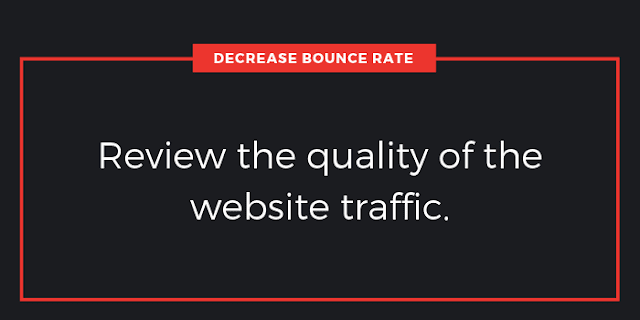
This blog post is all about how to decrease bounce rate.
Imagine, I optimize it with irrelevant keywords, say, “what is SEO” “SEO checklist” or, heck, even “what is bounce rate” – and I am getting organic traffic through these keywords…
Clearly, these visitors won’t find the exact content here that they are looking for, will they?
(Similar is the case with misleading headlines and descriptions – something that we discussed earlier.)
The quality of such traffic is irrelevant and untargeted. And this bounds to increase your bounce rate.
Now, there are many ways to review the quality of traffic.
One simplest way is to manually audit the content (including Meta tags and URL) of the webpage in question and see if it’s optimized with irrelevant keywords.
If you spot any irrelevancy, fix it.
A more concrete way to review the quality of traffic is through Google Search Console.
Log in to your Google search console and click on the ‘Performance’ tab in the left-side navigation.
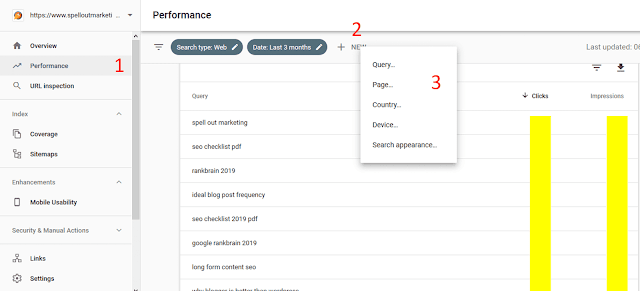
Click on the ‘Page’ option and enter the webpage in question that has the highest bounce rate.
Scroll down and check out the ‘Queries’ tab….

You will see a list of Keywords that are generating organic traffic to this webpage. Go through it.
And if you spot any query that’s irrelevant to the content of the webpage, all the traffic (“Clicks”) coming through it is generally of poor quality.
Re-optimize the webpage with fresh and more relevant keywords.
Key Takeaways:
- Your bounce rate will always be high if the quality of the traffic is bad and irrelevant.
- Check out the quality of the traffic of a webpage through Google Search Console.
14. Don’t Chase The Long-Form Contents
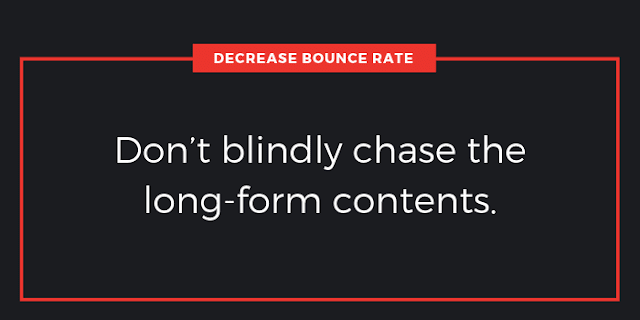
I speak a lot on this…
The Myth of 1,890 Words Long Articles
But understand this first: there have been multiple studies done on short-form vs. long-form content. Almost all of them favor long-form content.
Today, to rank higher on search engines, writing 2,000+ words articles is a norm across industries.
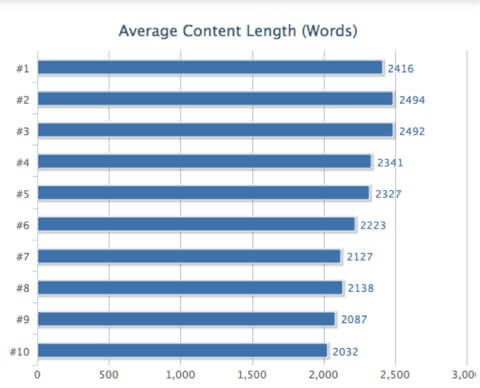
Because apparently Google “loves” them.
But there are also many cons to long-form content that these statistics completely overlook.
For example, the human attention span is lower than ever at present. It’s around 8 seconds. So, writing long articles unnecessarily is clearly a bad idea.
Two, in a survey, a whopping 41 percent of marketers reported a session duration on their website between 2-3 minutes.
Less than 10 percent of participants reported a session duration of more than 6 minutes.
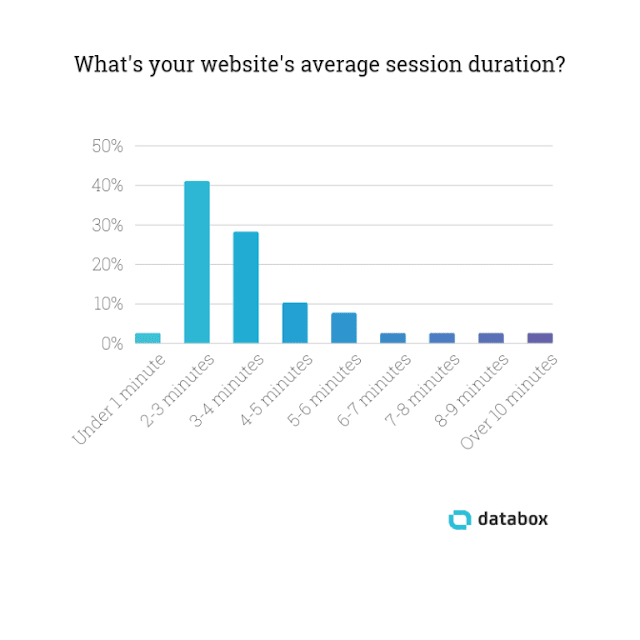
So, again, writing super-long articles isn’t a good idea even here per this statistic.
Also, today, there are more mobile internet users vs. desktop users. And not so surprisingly, these users on smaller screens might not appreciate scrolling through the page endlessly.
There are many other cons. Like, this thesis doesn’t fit every industry. (Read the two articles I mentioned above!)
So, STOP chasing the word count blindingly just because a few studies tell you such content rank higher on Google. They may, but they also hurt the UX, which indirectly hurts your SEO.
Keep articles to their natural length—whether it’s just 200 words or 20,000 words. Don’t extend their length unnecessarily.
Instead, as mentioned in point #6, acing your internal link-building game can better drive engagement. And, hence, reduce the bounce rate of the site.
Keep contents valuable and to the point, without looking at “how many words”.
Because if it’s forcibly long, the visitors wouldn’t want to scroll down and consume unnecessary stuff that they didn’t want in the first place.
And guess what they will do next?
They will leave, of course.
Key Takeaways:
- Don’t forcibly increase the length of your articles.
- Keep the articles to their natural length. If not, it will hurt visitors’ UX, which will then hurt your SEO.
15. Give Visitors More Than They Ask For
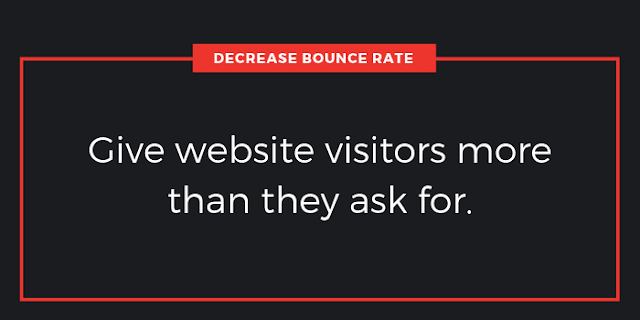
Value. Value. Value.
Yes, it’s quite a cliché – but it’s also that simple and fundamental.
If you’re providing value to the readers – more value than they have asked for – assumingly, they wouldn’t leave your website without engaging with it first.
And even if they do, they would return back.
Take this article for example…
If you find it valuable, you would definitely engage with this blog.
Maybe you would click on the internal links and jump on to some other webpage. Maybe at the bottom you would give me your email address.
Or, to the least, you would bookmark this post because it’s now spanning out to be one long piece. 😐
Understand that there’s NO alternative to this.
When you provide value to your audience, the rewards will follow… eventually if not immediately.
So, pack each of your posts with rich resources.
For instance, if you’re writing on “A Complete Guide to Lose Weight With a Vegan Diet”, also provide a PDF diet chart with this post. MORE VALUE.
If you’re writing on “Off-Page SEO techniques”, also include in the post the link to “On-Page SEO Techniques”. MORE VALUE.
Include internal links, guides, calculators, quizzes, and more in your posts.
If the visitors find them valuable, we have enough reasons to assume that they would lurk around and engage with your content and website for longer.
Key Takeaways:
- With each piece of content on your website, focus on delivering high value to your audience.
- Internal links, guides, exclusive reports, quizzes, calculators, and more – all these can be used to make your blog posts more valuable.
16. Have The Right Website Design
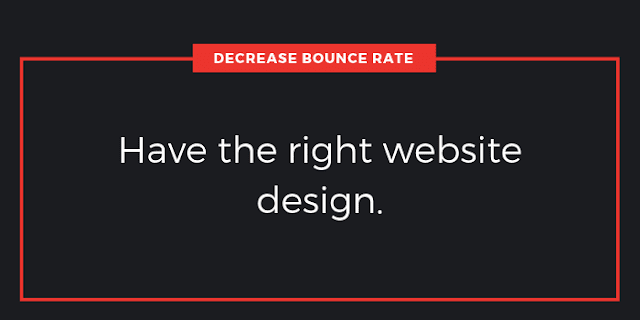
Given 15 minutes to consume content, 66 percent of people would rather read something beautifully designed than something plain and simple. (Source)
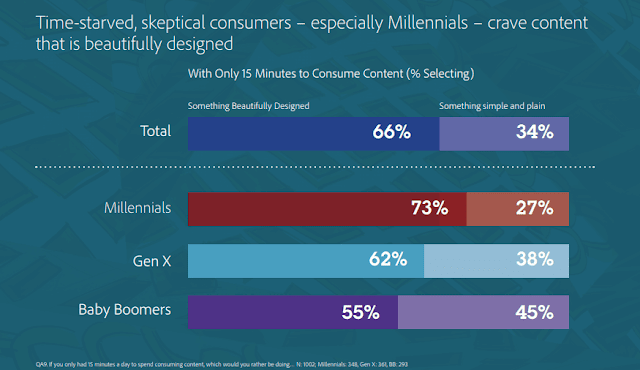
It’s not hard to believe that!
In fact, this report is from 2015. With how big of a deal UX has become, it has to be more than just two-thirds. It definitely must be over 90 percent now.
Practically, think of yourself…
Would you NOT want to consume content that’s served on a beautiful platform vs. content served on a simple platform?
Besides, it’s not just about content consumption. It’s about spending time on a platform and engaging with it.
We all want to engage with a website that’s visually pleasing. Because they feel more interactive and attractive.
So, in short, have a good website design.
Make sure it looks beautiful.
And above all, make sure it performs well, delivering a good user experience.
Now, there are many, many different components of website design – and too many questions as to what you should do and what you shouldn’t.
If it interests you, you should definitely read articles and guides on website design and development to get yours correct.
If not, there are a few things you can do. Like…
If you’re using popular CMSs like WordPress, Blogger, and Wix, always go with the most downloaded themes/templates. There’s a reason why they are downloaded this many times.
(Of course, after installation, personalize the theme to separate your website from others.)
Another thing to do is to simply learn from your successful competitors. Check out their website design and do the same things.
For example, if they have sticky navigation, have sticky navigation.
If they have a “Recommended Read” slider at the bottom, have one for your own self.
Have a good-looking, good-performing website. And bet on it that visitors would want to engage with the website more.
Key Takeaway:
- Have a beautiful, visually appealing website that also performs well.
- Install the ‘Most Downloaded’ theme. Take inspiration from the website design of your successful competitors.
17. Target The Right Keywords
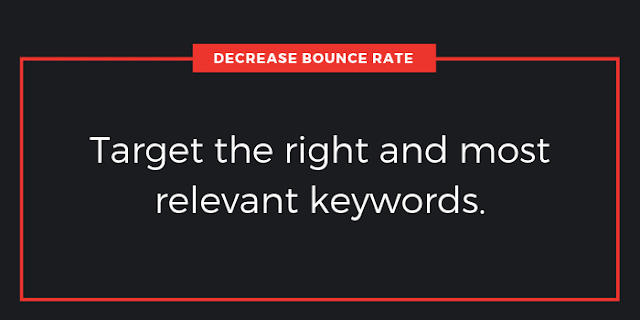
This is quite basic – a part of which I discussed in #13 ‘review the quality of the website traffic’.
Visitors who would find your content irrelevant, they would leave the website almost instantly, hence increasing your bounce rate.
So, it’s essential to NOT attract such kinds of visitors in the first place.
The simplest way to not to do that is by targeting the right keywords.
If you’ve written an article on ‘How to launch a healthcare startup’, focus on keywords like ‘healthcare startup tips’ and NOT ‘finance startup strategies.
When optimized with irrelevant keywords, your content will attract an irrelevant audience.
And guess what will happen next?
These visitors wouldn’t find what they are looking for. They would create a bad perception of your brand. And they would eventually leave the website.
(Even if they don’t, don’t expect them to convert so easily!)
So, target the right and most relevant keywords.
Recommended Read: How to do keyword research for free in 11 minutes?
Key Takeaways:
- Never include irrelevant keywords in your content.
- Optimizing content with bad keywords not only attracts poor-quality website traffic (and makes the content looks bad), but also hurt your brand value.
18. Improve The Trust Factor Of Your Website
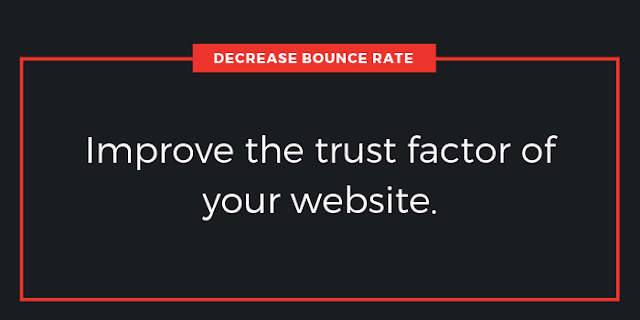
Nobody wants to engage with a shady, spam-like-looking website.
Furthermore, people don’t want to trust content on a website that doesn’t exude that trust feel.
Why a visitor would want to listen to a rant on life from someone who she/he doesn’t even know?
Why would visitors want to listen to advice on “leave your job” (and possibly make life-changing decisions) from someone who they have never heard of before?
There’s a reason why building a brand has become a core of digital marketing strategies.
Because a brand is one of the few assets around which a person/company can build long-term trust around.
There’s a reason why more and more people read online reviews…
In fact, nearly 95 percent of shoppers read online reviews before making a purchase.
…because they are looking for that “trust” before they make any purchasing decision.
Similarly, when consuming the contents on unknown websites, visitors continue to look for “trust” (at least subconsciously) before they decide to further engage with this website.
In short, you need to add some components to your landing page that makes it more trustworthy.
Fortunately, there’s a lot you can do.
- Have “As Seen In…” “Featured in…” banner somewhere on the page. When visitors see that your website has been featured in top publications like HuffPost and Forbes, it almost immediately built your credibility.
- Plug positive reviews, testimonials on the landing page.
- In your content, talk about facts and statistics. They sell better than personal opinions, building trust quicker. With those facts and statistics, they also provide the link to their source.
Of course, there are a few other things you can do.
Like using specific color schemes on your website, which has a positive psychological trigger.
Also, putting your own image up on the page can get visitors to trust you more.
The moment website visitors start trusting your website and the content they are consuming, not only will it decrease the bounce rate but also boost your conversion significantly.
Recommended Read: 11 Magical ingredients that will make your blog post trustworthy
Key Takeaways:
- When people trust your website, they are going to stay on it for longer.
- Employ basic tactics to build trust with website visitors. Like, show positive reviews/testimonials on the landing page. Have “As Featured In…” banner.
19. Maybe You’re Looking At The Wrong Metric?
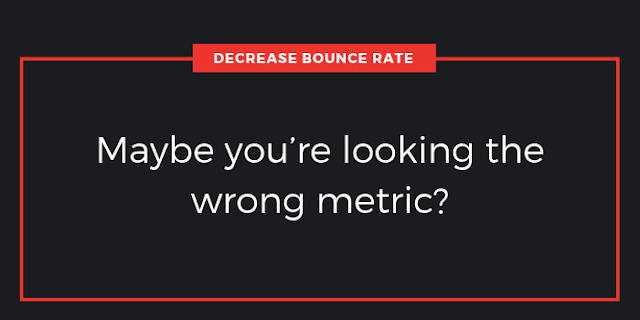
(Yes, I missed adding “at” in the image! 🙁)
Bounce rate is an important SEO metric. However, it isn’t alone sufficient to outline the effectiveness of your whole SEO strategy.
So, it must be measured and considered in a whole context and NOT individually.
Primarily, the bounce rate centers on user engagement with the website. And there’s a big difference between engagement and conversion.
For example, say 100 people are coming to your page and leaving after consuming the content without engaging with other pages on your domain.
But while they are on this landing page, 50 of them signed up for your newsletters.
The bounce rate is 100 percent. BAD. Conversion is 50 percent. SUPER-GOOD.
So, while one metric shows bad news. The other one, likely the most important one for your business, shows some great news.
There are many other instances where the bounce rate isn’t the most relevant metric IF you’re going to use it individually.
It makes less sense to mope over a low bounce rate when your squeeze page is converting big.
If your website has fewer content/blog posts, a high bounce rate shouldn’t necessarily be your primary concern. Your primary focus should be on producing more content.
In short, don’t alone use bounce rate to measure your SEO success. It should be used with other metrics to give you a better sense of how good your optimization strategy is.
Use these numbers collectively to recognize problems in your SEO.
A bounce rate doesn’t always mean “the worst has happened”. At times, it simply means that you should look at other metrics.
Key Takeaways:
- Don’t use bounce rate in silo to measure your SEO success.
- Use the bounce rate in conjunction with other metrics on your Google Analytics to truly recognize your SEO game.
Conclusion
There are many other small things you can do to decrease the bounce rate. Like…
- Avoid putting too many outbound links in your content. If you’re going to do it anyway, make sure they all open in a New Tab.
- Produce more and fresh content regularly. This will allow enough options for your visitors to browse around your website.
- Stop promoting your content on channels that are bringing you low-value traffic.
- Personalize your content. “This was written for me” – if you can get your readers to feel like this, there’s a good chance that they would hang around on your website for a bit longer.
- Have multiple landing pages with personalized content that adequately fit the different search queries of the visitors.
“How to reduce bounce rate?”
Honestly, this isn’t too difficult of a question.
All you’ve got to think is…
Why would visitors want to stay on my website?
The answer to this very fundamental question will open for you a treasure of ideas on how you can hook visitors on your site, which will eventually decrease your bounce rate.
Good luck 🙂
Found this post resourceful? Please share it on your favorite social media.

